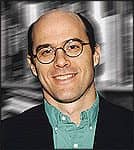Professor Miriam Furst-Yust of Tel Aviv University’s School of Electrical Engineering has developed a new software application named "Clearcall" for cochlear implants and hearing aids that improves speech recognition for hard-of-hearing individuals by up to 50%, says a statement released by the university.
Based on a cochlear model that she devised, the new patented technology is being developed to improve the capabilities of existing cochlear implants and digital hearing aids, says the statement. Adding Clearcall to current technology is straightforward, and requires only add-on software for existing devices, says the statement.
Furst-Yust says in the statement that the researchers have developed a mathematical model of the ear that shows how speech recognition works. The software was originally developed for use in cell phones, but Clearcall introduced distortions that people with healthy hearing found distracting, says the statement. That’s when Prof. Furst-Yust started applying the methodology to hearing aids.
Clearcall works with the brain’s own sound recognition faculties to help the hearing aid wearer filter out background noise, says the statement. To a person with normal hearing, a Clearcall-filtered voice will sound distorted, the same way it’s hard for some people to recognize voices and words over the telephone, it says. And even to people who are newly diagnosed as having a hearing impairment, Clearcall will sound different, says the statement. But with continued use, the software improves the clarity of voices from 30 to 50%, it says. Furst-Yust is preparing the results of her study for publication. It is based on people with only 20% of their hearing intact, says the statement.
Available for licensing through Tel Aviv University’s commercialization company, Ramot, the software could become part of an existing implant or device in a matter of months once the right strategic partner is found, says the statement.
Furst-Yust continues to refine her algorithm for future applications and foresees the invention of an ultimate device for filtering out the things normal hearers don’t want to hear, like the boombox next to us on the subway, the statement says. She believes it will be easier to target music than voices, since our brains are trained to already listen to music differently.
[Source: Tel Aviv University]




